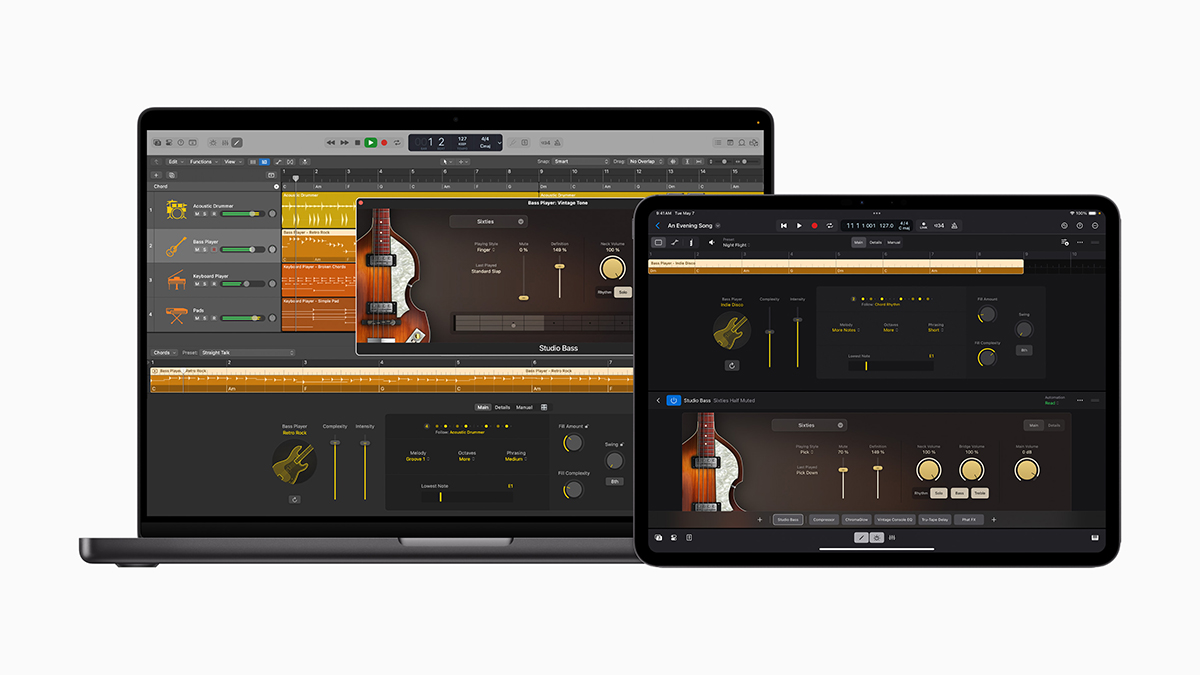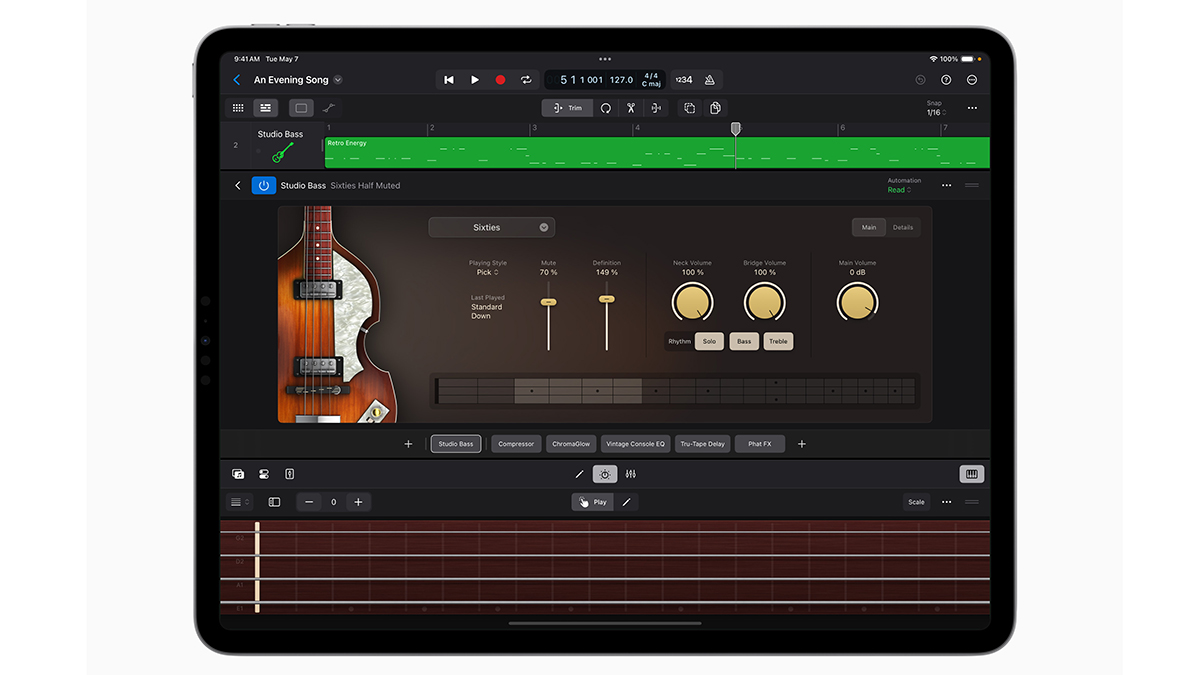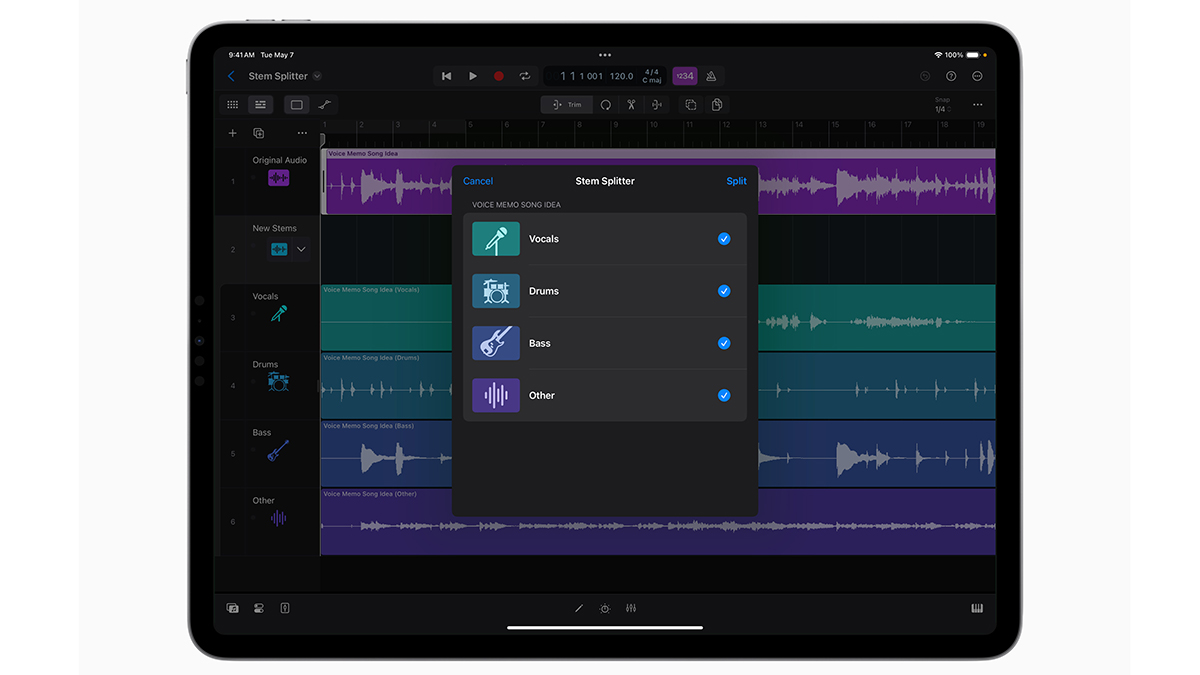
Apple Logic Pro 11/Logic Pro for iPad 2 review: What is it?
Were it not for Apple’s misjudged commercial that shows a large collection of creative gear being ‘crushed’ into the company’s new iPad Pro - including several musical instruments - the launches of the new versions of Logic Pro (version 2 for iPad and version 11 for Mac) wouldn’t be in the least bit controversial.
Combine that marketing mishap with the new software’s heavy focus on AI, though, and you begin to ask yourself a few questions. Does Apple want to rid the world of real ‘stuff’ and leave the iPad as the one remaining creative tool? And does it want to automate the music production process so much that all the user has to do is press a button?
Without giving too much away, we can reassure you that the answer to both of those questions is almost certainly ‘no’, but there’s no getting away from the fact that the new versions of Logic Pro do put AI front and centre. The software has long had a built-in, customisable virtual Drummer, and this has been joined by two new so-called ‘Session Players’ that can take care of bass and keyboard parts.
These have their own companion plugins, too - Studio Bass and Studio Piano - which are designed to provide high-quality sounds for these new Players and can also be used as you would any other software instrument.

Elsewhere, Apple is getting into the audio extraction game with Stem Splitter, a new feature that leverages the power of AI and the company’s silicon chips to break mixed audio into drum, bass, vocal and ‘other’ instrument parts. We’ve seen this kind of technology before, of course - in dedicated plugins, cloud-based services and various DAWs, including FL Studio and Serato Studio. Apple has beaten the likes of Ableton and Steinberg to the punch on this one, though.
The hand of AI is also evident in ChromaGlow, a new one-stop warmer that enables you to dial in one of five saturation models. Each of these is based on classic hardware, and is designed to give you That Sound that separates bedroom productions from those finessed in big-budget studios.
It’s also telling that Apple is launching these new versions of Logic Pro together, while emphasising the round-trip capabilities that mean you can move projects back and forth between Mac and iPad. Given the differences between the touchscreen and desktop interfaces it seems unlikely that the apps will ever be exactly the same, but they’re certainly getting equal billing.

Apple Logic Pro for Mac 11/Logic Pro for iPad 2 review: Performance and verdict
Your relationship with the new Session Players is likely to be determined by how you view the nature of creativity itself. If you’re happy to let your DAW do a fair bit of heavy lifting - to the point where you’re guiding it rather than using it as a canvas for your own ideas - then they can take you a long way, but if the satisfaction you get from making music is derived from the challenge of composing and recording your own parts, they might leave you cold.
And that’s not really a criticism because, on their own terms, Bass Player and Keyboard Player are undoubtedly a success. They’re guided by a global Chord Track (you can also set chords by region, if you wish) and come with both preset progressions and the ability to edit chords on an individual basis.
As well as being able to select chord ‘qualities’ from a pop-up window - root note, type (major, minor etc), extension, bass note and scale - you can also input chords via MIDI, which is a great time-saver if you’re a keyboard player. The only downside here is that you have to select the MIDI input option every time you edit a chord, which can get a bit tiresome when you want to quickly add a whole progression.
What the Players can’t do is extract chord information from an existing part or follow along with you as you play. It seems conceivable that these features could arrive at some stage, but the big AI brain hasn’t cracked that one just yet.
A number of Apple Loops with chord progressions built in are included, though, and the Players are highly adjustable. As well as being able to set them to follow the groove of a specific track you can also select from preset rhythms or program your own, and adjust the complexity and intensity of the playing. There are knobs to set the fill frequency and complexity, too, and to dial in some swing.

There are plenty of instrument-specific parameters, too. For the Bass Player, you can control the number of notes and octaves being played and adjust the phrasing, while the option to set the lowest playable note is useful if you want to emulate the sound of a 5-string. Dive into the Details tab and you can find double stop, dynamics, dead note and muting options.
The Keyboard Player is similarly flexible. Not only can you specify whether you want to hear the left hand, right hand or both together, but you can also set these hands’ positions on the keyboard (higher or lower) and choose between various voicing and movement options. There are fewer detailed controls here, but you can set the frequency of grace note playing and tweak the feel, dynamics and humanise dials.
In fact, with multiple style and preset options, the new Session Players are more flexible than you might think. The Drummer interface has been overhauled, too, so that it matches its Keyboard and Bass siblings, and remains an excellent source of rhythmic inspiration. It’s surely only a matter of time before Apple adds a guitarist, too, to complete the band line-up.

There’s less to say about Stem Splitter - the best compliment we can pay it is that it works pretty much exactly as you’d expect. Import your mixed audio, select the relevant option from the region menu and you can choose which stems you want to liberate. Hit the Split button and then after a few seconds (depending on the power of your processor) all the selected parts are extracted and laid out on the timeline.
We can’t say that the results are audibly superior to those we’ve heard from other stem separation software, and vary depending on what you feed it, but what you do get with Stem Splitter is convenience. For Logic Pro users who want this feature - whether for remixing, breaking apart voice memos of band rehearsals or anything else - we can’t see any need to look anywhere else.
Next stop, ChromaGlow, Logic Pro’s new simple saturator. There are five tonal options - Retro Tube, Modern Tube, Magnetic, Squeeze and Analog Preamp - and you can also switch between clean and colourful styles (or, in the case of Squeeze, Soft Press or Hard Press).
The main focus then is the central Drive knob, which dials in the saturation amount. You can also set the input, output and mix levels, and bypass the effect below a specified frequency. High and low-cut filters are included, too.

While it’s not quite a ‘make this sound good’ button, ChromaGlow will definitely appeal to those who’ve been wondering why their tracks don’t have that almost indefinable warmth that other people’s do, and is simple enough that anyone can use it.
In fact, that’s a pretty good summation of these Logic Pro updates overall. Long-time users might argue that the new features represent a ‘dumbing down’ of the software, but they do have the potential to bring new people through the door, and that, ultimately, is probably what Apple wants. The Session Players are definitely skewed towards budding songwriters who might not have the musical skills to turn their ideas into reality, but they could also be ‘misused’ by electronic musicians by using different sounds and pushing the settings to more extreme or unusual levels.
You don’t have to use all of them or use them all the time, either. In fact, we suspect that there will be people who never use them for recording, but do call them up when they simply want a backing band to jam along with. Getting a groove to sound just how you want it can feel a little fiddly at times, but it’s a hell of a lot easier than getting three or four people in a room together, and there's far less chance of you having a blazing row.
And if the Players really aren’t your thing, you are at least getting the new carefully sampled Studio Piano and Studio Bass instrument plugins that power them. Both would be worthy inclusions, even without their auto-playing responsibilities.

One thing we do wonder is what all of this means for the future of GarageBand. In many ways, the Session Players feel like more advanced versions of the Smart Instruments that have been in the iPad version since day one. Will they make the jump across, as Drummer has? They’d certainly be a good fit, but does Apple see them as important enough to the future of Logic Pro to make people pay a subscription fee if they want them?
On the subject of payment, by the way, we’re glad to see that Logic Pro for Mac remains a one-off purchase. Version 11 is a free update and simply serves to make it even more of a bargain than it already was (other specific enhancements for this version include enhanced Dolby Atmos support, real-time Bounce in Place, tweaks to Drum Kit Designer and improved editing tools).
With these new versions of Logic Pro, it feels like Apple is giving us the friendly, helpful face of AI. As we reach a point where you’ll soon be able to make a track simply by typing a text prompt or two, the Session Players almost feel rather quaint, and certainly not the crushing blow to human creativity that some might have feared. Musicians and producers remain in control for now - it remains to be seen for how long.
MusicRadar verdict: These new versions of Logic Pro won’t write and produce a song for you, but they’re certainly the most helpful, user-friendly updates to Apple’s flagship DAW yet.
Apple Logic Pro for Mac 11/Logic Pro for iPad 2 review: Specifications
- Apple Logic Pro for Mac 11: Requires macOS 13.5 or later; requires 6GB available storage space for minimum install or up to 75GB storage space for full Sound Library installation
- Logic Pro for iPad 2: Requires an iPad with Apple A12 Bionic chip or later and iPadOS 17.4 or later. Some features require an iPad with Apple M1 chip or later; requires 987MB available storage space for minimum install or up to 31GB storage space for full Sound Library installation
- Contact: Apple






